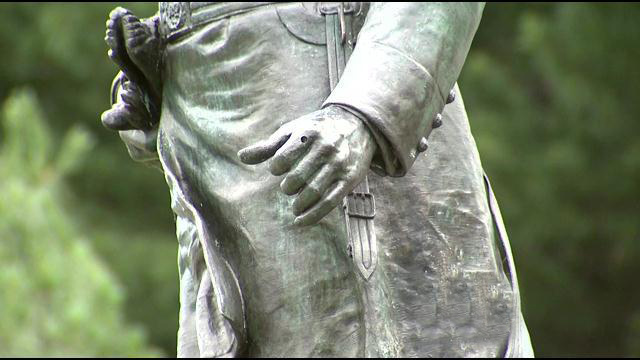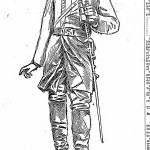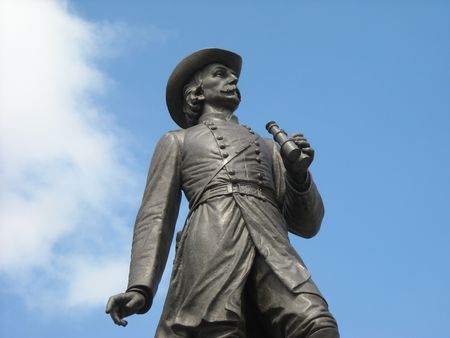THE SECOND HUMILIATION OF WARREN (1960)

A number of New York City Parks Department statues are having their stolen swords replaced reported a DNAInfo story.
The statues, most of which have had their their swords stolen (bayonets, and glasses, in some instances) during times of high crime, are now deemed worthy of replicas being cast. The Parks Department worries less now about the replicas being stolen themselves.
I’ve often noticed one such statue in particular – the Kemble Warren statue at the Grand Army Plaza. First of all, why was it there? What had Warren, an engineer, done that could have been so critical to the war effort? Had he been a critical part of the attack at any actual battle? I figured that, as an engineer, he had – more likely – prepared a defense.
But was that enough to receive a statue?
KEMBLE WARREN – A HUMILIATION

Gouverneur Kemble Warren, the engineer for whom the statue at the Grand Army Plaza had been cast and dedicated, had been known for his heroism at Gettysburg.
By the time that General Philip Sheridan had begun his “burning of the Shenandoah Valley,” though, Warren had been castigated by, what Sheridan referred to as, a critical slowness in arriving to a certain battle.
Because of this, Warren had been relived of duty by the general (an action supported by General Grant, at the time) and assigned to another, less critical, theater of battle.
The humiliation of the relief of command, though, had already had its effect.
After some time, Warren was eventually vindicated when a court of inquiry found that Sheridan’s relief of Warren had been unjustified. Unfortunately, for Warren, the court brought out the truth posthumously. Warren had died just before the results were released to the public.
1896 – A DEDICATION
 Fortunately, though, because of his vindication, his valiant service and heroic duty was remembered 14 years later when his statue was unveiled at Grand Army Plaza.
Fortunately, though, because of his vindication, his valiant service and heroic duty was remembered 14 years later when his statue was unveiled at Grand Army Plaza.
Just 30 years after the most traumatic battle in the U.S., many American and many Civil War veterans were alive who recalled the days of the war.
Two of Warren’s sisters-in-law attended the event, along with the general’s son and brother, numerous other former colleagues of Warren – many generals and other high-ranking military officials – were also in attendance.
In a Brooklyn Daily Eagle story from the day of the unveiling of the statues, it was noted that the rock for the base of the statue had been quarried from Little Round Top, in Gettysburg, a battle at which Warren’s direction was essential.
The Eagle reporter noted that the valiant general’s vigilance and promptitude “saved the day” and that at that battle “he was hit by a sharpshooter.”
And now almost 120 years after the unveiling, Warren will have his sword back.
(Read about the replacement of the Victory and Peace statue that was stolen from Bedford-Stuyvesant’s Saratoga Park a few years ago.)
———————————————————————————————————————–
 The story you have just read was composed from extensive historical research conducted by The Brownstone Detectives. We perform in-depth investigations on the historic homes of our clients, and produce for them their very own House History Books. Our hardbound books include an illustrated and colorful narrative timeline that will bring the history of any house to life. Contact us today to begin discovering the history of your home.
The story you have just read was composed from extensive historical research conducted by The Brownstone Detectives. We perform in-depth investigations on the historic homes of our clients, and produce for them their very own House History Books. Our hardbound books include an illustrated and colorful narrative timeline that will bring the history of any house to life. Contact us today to begin discovering the history of your home.